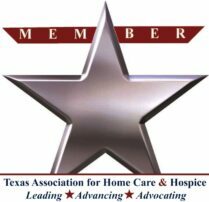-
Nurse Teaching on Fall Prevention
Goal:
To educate patients, caregivers, and healthcare staff on strategies and interventions to prevent falls and reduce the risk of injury, particularly for vulnerable populations like older adults and those with chronic conditions.
1. Assessment
- Patient Evaluation:
- Identify patients at high risk for falls (e.g., elderly, post-surgery, neurological conditions).
- Assess for fall risk factors: history of falls, medication side effects, weakness, poor vision, environmental hazards.
- Check for gait and balance problems, sensory impairments, and cognitive function.
2. Teaching Objectives
By the end of the session, the patient and/or caregiver will be able to:
- Identify common fall risk factors.
- Implement strategies to prevent falls in the home or healthcare setting.
- Demonstrate how to safely navigate their environment.
- Understand the role of assistive devices and physical therapy in fall prevention.
3. Fall Prevention Strategies
A. Environmental Modifications
- Remove Tripping Hazards:
- Clear pathways of clutter, rugs, and electrical cords.
- Ensure furniture is arranged to allow easy movement.
- Install grab bars in bathrooms near toilets and in showers.
- Ensure proper lighting in hallways and stairs.
- Keep frequently used items within easy reach to avoid climbing.
- Proper Floor Surfaces:
- Ensure that floors are non-slippery and even, particularly in bathrooms and kitchens.
- Use non-slip mats or rugs where needed.
B. Personal Safety Measures
- Footwear:
- Wear well-fitting, non-slip shoes or slippers.
- Avoid walking barefoot or in socks on slippery surfaces.
- Assistive Devices:
- Use canes, walkers, or other mobility aids if prescribed.
- Ensure that these devices are in good condition, properly adjusted, and used correctly.
- Vision:
- Regular eye check-ups to maintain optimal vision.
- Wear prescribed eyeglasses and correct any vision problems that might impair balance.
C. Physical Health and Exercise
- Strengthening Exercises:
- Engage in weight-bearing exercises like walking or strength training to improve muscle strength.
- Practice balance exercises, such as tai chi, which improve stability and coordination.
- Physical Therapy:
- Participate in a physical therapy program designed to improve balance, mobility, and strength.
D. Medication Management
- Review Medications:
- Discuss the side effects of medications (e.g., dizziness, sedation) that can increase fall risk.
- Work with a healthcare provider to adjust medications, if necessary.
4. Teaching Methods
- Verbal Explanation:
Discuss common causes of falls, the importance of fall prevention, and specific strategies tailored to the individual patient. - Written Materials:
Provide brochures or handouts that outline key points about fall prevention and safety modifications. - Demonstrations: Show how to use mobility aids correctly, how to adjust the environment to reduce hazards, and demonstrate exercises for strength and balance.
- Return Demonstration:
Ask patients to show their understanding by demonstrating safety practices, such as using a walker or identifying potential hazards in their home.
5. Evaluation
- Patient Understanding:
Evaluate whether the patient can articulate key strategies for fall prevention. - Practical Application:
Assess if the patient has made changes to their environment (e.g., removing tripping hazards) and implemented personal safety measures (e.g., using mobility aids). - Follow-Up:
Schedule follow-up visits to reassess fall risk and provide additional support, especially if the patient is still at high risk.
6. Additional Resources
- Community Resources:
Provide information about community exercise programs (e.g., senior fitness programs) and fall prevention workshops. - Referral to Specialists:
Refer patients for physical therapy, vision assessments, or geriatric care if indicated.
This nurse teaching provides a comprehensive approach to fall prevention, emphasizing environmental changes, personal safety, physical health, and medication management, all tailored to the needs of the patient.
- Patient Evaluation:
Recent Posts
- Understanding Fluticasone: Uses, Benefits, and Considerations
- Understanding Levonorgestrel: Uses, Effectiveness, and Everything You Need to Know
- Understanding Meclizine: A Comprehensive Overview
- Understanding Norethindrone: Uses, Benefits, Side Effects, and What to Know Before Taking It
- Understanding Methylprednisolone: Uses, Benefits, Side Effects, and Key Considerations
Archives
- November 2025
- October 2025
- September 2025
- August 2025
- June 2025
- May 2025
- April 2025
- March 2025
- February 2025
- January 2025
- December 2024
- November 2024
- August 2024
- July 2024
- June 2024
- May 2024
- December 2023
- November 2023
- October 2023
- August 2023
- July 2023
- May 2023
- April 2023
- March 2023
- December 2022
- September 2022
- August 2022
- May 2022
- March 2022
- February 2022
- January 2022
- December 2021
- October 2021
- September 2021
- August 2021
- April 2021
- February 2021
- January 2021
- December 2020


Recent Comments